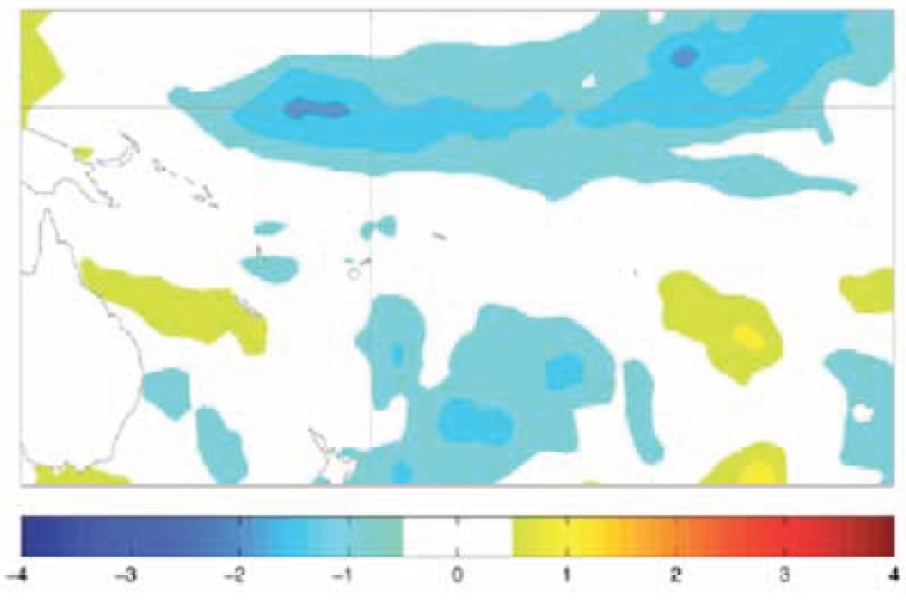The recent La Niña event weakened during February– March, and present conditions in the tropical Pacific are near ENSO–neutral.
The SOI remained near zero at +0.1 for March (+0.1 in February), while sea surface temperature anomalies eased further: in March, NINO3 was –0.1°C (based on only 3 weeks of March) and NINO4 –0.6°C (weakening from –1.0°C in January).
Equatorial sea surface temperature anomalies are weakly positive in the far eastern Pacific, between about 120°W and the South American coast, and primarily south of the Equator. The sub–surface warm anomaly near 150m depth in the western Pacific has made no further progress eastwards, and if anything has retreated west by about 20° longitude.
The TRMM ENSO index became significantly more negative (more La Niña–like) during the month, from –0.5 in February to –1.6 in March (30 days to 26 March). This is primarily an indication of much wetter conditions over the Maritime Continent and northern Australia.
Eight of the ten dynamical models, and four of the five statistical models NIWA monitor predict ENSO–neutral conditions for late autumn (AMJ), with the others projecting weak La Niña conditions to persist. Five of the dynamical models indicate development of an El Niño event in the following JAS period.
The latest IRI technical summary of 15 March expects the existing weak La Niña to dissipate in early April. They forecast a 8% chance of La Niña and 92% chance of neutral conditions for April–June as a whole, moving to 73% chance of neutral and 27% chance of El Niño in July–September.

